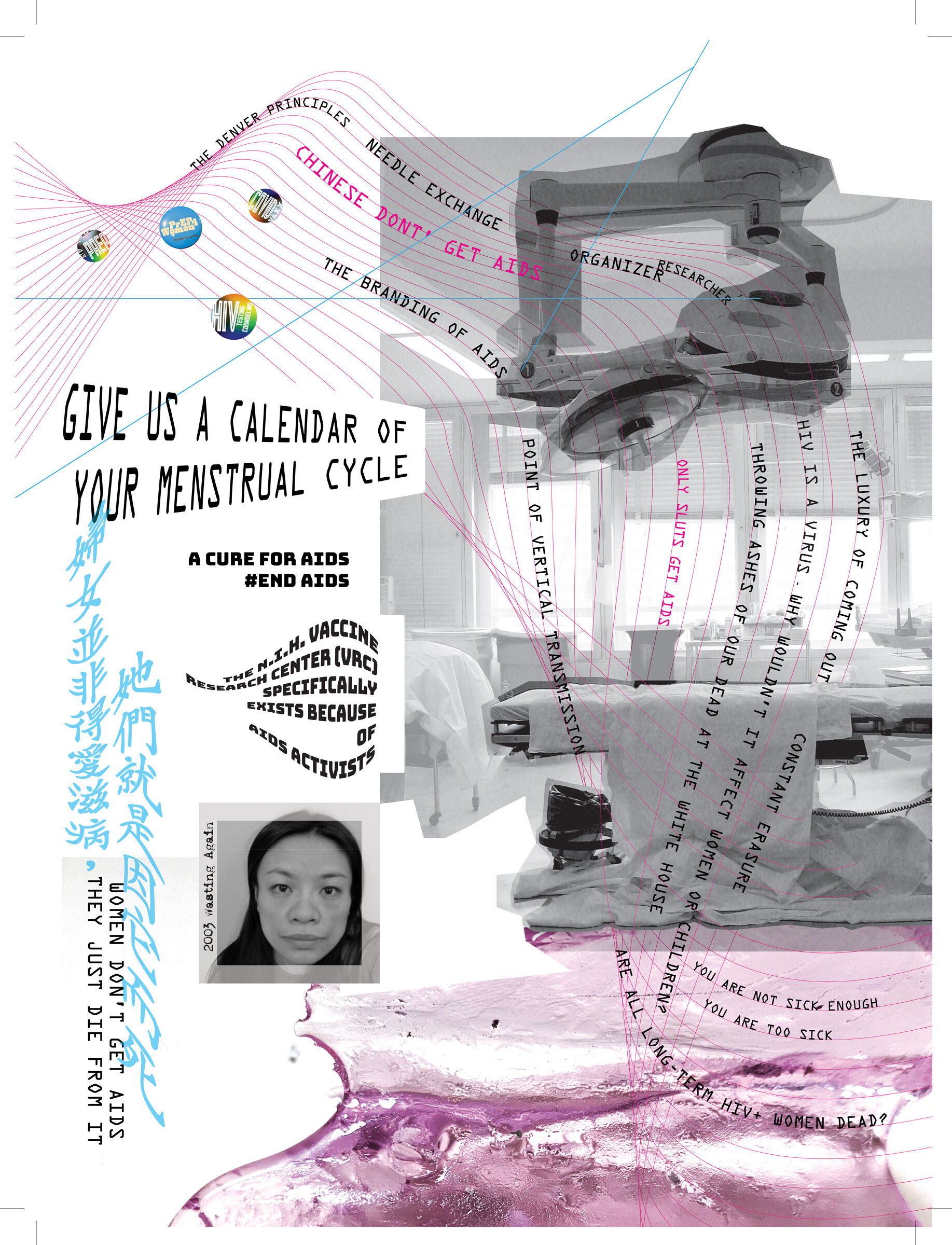Whitney Biennial 2022: Quiet as It’s Kept | Art & Artists
Apr 6–Oct 16, 2022
Whitney Biennial 2022: Quiet as It’s Kept | Art & Artists
Ivy Kwan Arce and Julie Tolentino
32
Floor 6
Ivy Kwan Arce: Born 1965 in Salinas, CA
Lives in New York, NY
Julie Tolentino: Born 1964 in San Francisco, CA
Lives in Joshua Tree, CA
The elements of this installation by Ivy Kwan Arce and Julie Tolentino come together as a constellation of sorts: their components vary in both form and function, but collectively they elevate and outline a vision of activism that opens onto a wider philosophical world view. The work centers systems of care and knowledge bases that sustain the work of Kwan Arce, who is a longtime HIV and AIDS activist as well as a mother and wife. A QR code gives access to activists whose work has been especially significant to Kwan Arce, while glass orbs within the Museum communicate via satellite with identical orbs that members of her active care network have committed to carrying around for the duration of the Biennial. Glass sculptures—some of which have been tempered conventionally while others were made in a manner that leaves them vulnerable to stress fractures—embody the artists’ understanding of activism as a slow but unrelenting process of finding cracks in the system. The projects culminate with a durational performance.
ECHO POSITION: Poster, 2021
-
0:00
Ivy Kwan Arce, ECHO POSITION
0:00
Ivy Kwan Arce: I am Ivy Kwan Arce, mother of Atom, born in the year 2000, and Ahimsa, born in 2004.
My husband, Alex Arce, and I searched for a name that would honor our struggle to conceive and carry a pregnancy, as I have lived with HIV/AIDS for over three decades. The atom is the basic building block of chemistry. Ahimsa, in the Hindu, Buddhist, and Jain traditions, denotes the active practice of non-injury to all living beings and is a central principle of Gandhi’s activist practice.
In 1999, at a time when doctors actively counseled HIV-positive women against becoming pregnant, I insisted on my right to give birth and to prevent neonatal transmission of the HIV virus. AIDS activism prioritizes refusing the status quo and insists that researchers and care providers partner with the person with HIV/AIDS, the PWA, and acknowledge our needs and desires.
As a Cantonese and American woman of color, my survival always depends on modes of activist collaboration that account for my individualism. Julie Tolentino is my partner here, for her practice explores how we are sustained by the efforts and legacies of others and how the dead and living exist in a constellation. Julie and I are mutually connected to performance studies scholar and veteran AIDS activist Debra Levine, and we invited her to develop this audio narrative with me.
From the time of my diagnosis, a few constant presences have sustained me.
One is Sandra Vreeland, a poet who died of AIDS in 1996. Sandra and I were close friends, but we never spoke about our shared circumstances. Sandra’s two-year-old granddaughter, Maia, carries one of the four orbs and, in doing so, extends my bonds with Sandra over generations.
Elena López de Lamadrid introduced me to a man with whom I had a brief and complicated relationship. I love Elena and know she struggles with feeling responsible in part for my seroconversion. I asked her to hold an orb to communicate that I recognize her deep investment in my survival.
Rebecca Jordan-Young possesses a third orb as a proxy for Sally Cooper. Sally led the PWA Health Group from 1993 to 1999 and organized a peer-education group to improve the health of positive women. I learned about my disease and treatment options at the Health Group and Sally became my steadfast advocate until her death in 2018.
The last orb is held by Eduardo Wong, my best friend, my cousin, an out gay man, the first person I called when I received my diagnosis. We grew up in Bolivia together, and haven’t seen each other in over two years because I am immunocompromised and COVID has limited my travel. But our geographic distance does not lessen his constant presence.
The constellations of these relationships allow me to live the full measure of my life.

